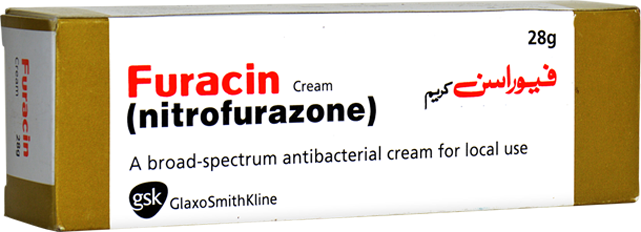Benefits of topical treatment with Furacin
Furacin is indicated in the prevention of development of bacterial infections in burns, wounds, lacerations, abrasions, and skin ulcers. It is available in the form of epidermal cream with apricot extract and beeswax. Its effect is further promoted by Microcyn® technology, which is a unique pH-neutral sterilant product with powerful wound healing capabilities. It is bactericidal towards most pathogens that cause topical infections.
Furacin vs Neosporin
Adverse reactions of Furacin sometimes occur in patients hypersensitive to nitrofurazone. Occasional allergic skin manifestations include local hypersensitivity or eczema, which subside upon discontinuation of the product.
Some forms of complete intolerability to nitrofurazone become the reason why certain patients prefer Neosporin. This product promotes better wound healing in an easy-to-follow 3-step process. These steps are 1) Cleanse, 2) Treat, and 3) Protect your wounds to prevent infections and speed up healing. Rapid absorption of the cream relieves pain in smarting cuts, scratches and burns, helping to prevent the spreading of the infection. Another benefit of Neosporin as compared to Furacin is that the former ointment keeps scarring to the minimum.
Other characteristics of Neosporin antibiotic ointment are as follows:
- double protection from antibiotic infection for children, accompanied by pain relief;
- lessens the smarting sensation in cuts, scratches, and burns;
- quick absorption;
- suitable for children starting from 2 years of age.
Furacin vs Fucidin
Fucidin cream is also indicated for the treatment of skin infections, especially those caused by Gram-positive bacteria. In comparison to Furacin, however, Fucidin offers a greater spectrum of antibacterial activity, target species of which include staphylococci (with MRSA), Streptococcus, Propionibacterium acnes, and Corynebacterium minutissimum. This higher versatility makes Fucidin a perfect medicine for such indications as impetigo (both bullous and not bullous), carbuncles, infected lesions, hidradenitis, folliculitis, boils, paronychia, sycosis of the beard, erythrasma. Also, Fucidin cream makes for a good cosmetically acceptable treatment of face and scalp infections in cases of acne vulgaris due to its invisible stain-free application.
Furthermore, Fucidin is completely different from Furacin in its mechanism of action. The antibacterial action of fusidic acid results from the inhibition of bacterial protein synthesis as it interferes with the transfer of amino acids for the aminoacyl tRNA in the ribosomes. Its resulting effect can be bacteriostatic or bactericidal depending on the size of the inoculum. Primarily, Fucidin is an antibiotic that exerts antimicrobial activity against various gram-positive organisms. At the same time, in addition to its marked action against most microorganisms responsible for skin infections, Fucidin has an additional advantage of getting to the very source of infection, even when applied to intact skin. Topical administration of this cream results in much higher local concentrations of fusidic acid than it can be achieved with similar preparations.
Furacin vs Furazone
Nitrofurazone is another topical antibacterial agent indicated as an adjuvant treatment for burns of the second and third degree. Similarly to Furacin, it is applied when resistance to other agents is a real or potential problem. Nitrofurazone is also indicated in cases with skin graft – specifically when bacterial contamination can cause graft rejection or infection at the donor site, which is not infrequent in hospitalized patients with a history of bacterial resistance.
Mainly, Furazone differs in its ability to inhibit both Gram-positive and Gram-negative bacteria.
Topical Furazoneis administered after cleaning the infected area. Try to apply enough ointment on the lesion with fingers or by using roll or gauze strips impregnated with the product, especially with burns, grafts and superficial wounds. Application of the ointment can be repeated several times a day, but even when following a different dosage scheme, dressings should be changed frequently. Normally, Furazone can be used until the infection subsides, since it does not macerate the tissues. The Furazone solution, on the other hand, can be applied by spraying it directly or applying the aerosol on dressings (with an atomizer), in those places where applying medicine-soaked gauze bandages presents difficulty or inconvenience.



